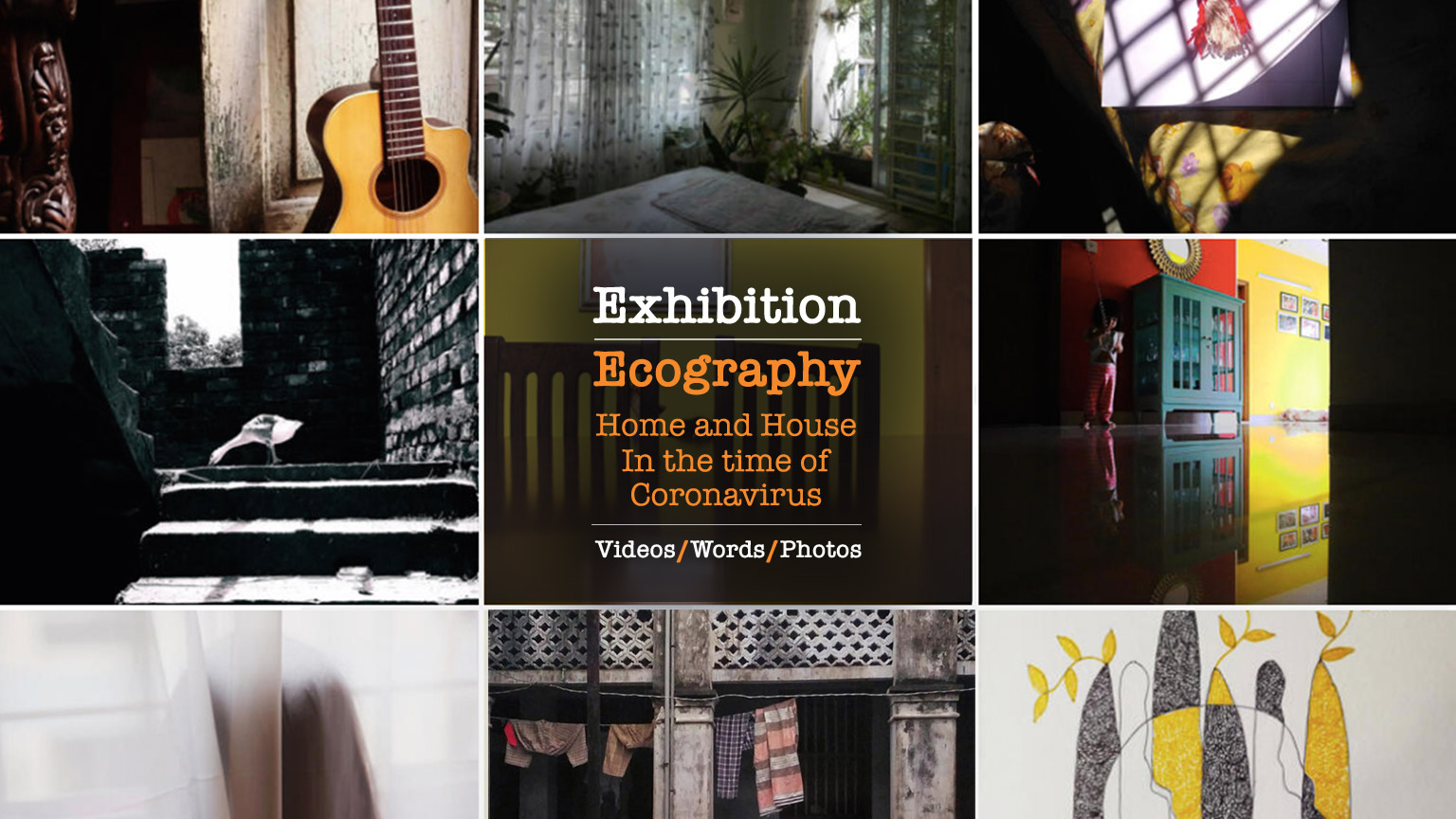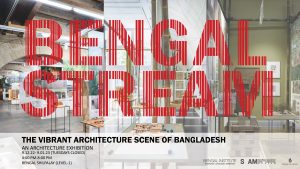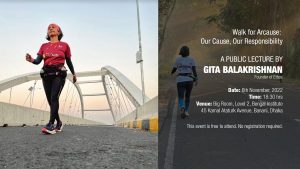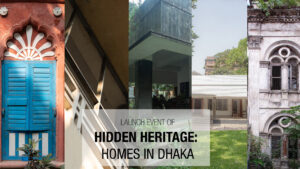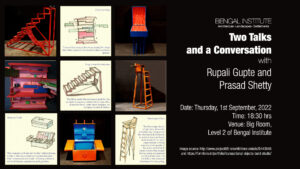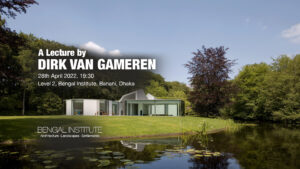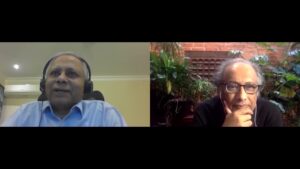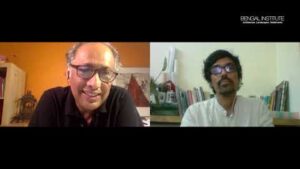Ecography: Home and House in the Time of Coronavirus– An Online Exhibition
“Home” continues to be at the centre of the pandemic. With the commendation for isolation, quarantine, or lockdown, as a way of battling the virus, most of our lives are expelled from the public realm. It would appear we are now exiled at home. We have all retreated to a home space as much as we can, in whatever way we may configure a home. Even with some gradual relaxation, we are still mostly homebound. Which only makes home a poignant place, and makes us think it anew. Oftentimes, a thing that is closest to us and taken for granted—such as home—appears in a new light when the rhythms around it are altered, disrupted, or heightened.
Home has a variegated meaning even within a homogeneous culture, and is never a thing by itself. If “oikos” is homestead or house, from which we have ecology and economy, “ecography” is a measure of that home.
We received many responses to our call to submit “something” that captures a new awareness of home. We present here the variegated responses from cities and locations in many countries.
We welcome you to the online exhibition: [Randomly ordered]
Videos [Jump to Writings | Photos]
I also began to notice how my tiny niece uses different spaces of the house. Her association with different humans of the house in different spaces at different times of the day.
PFA three photos capturing the same.
Prototype habitat for marginalised people during post COVID- 19 times. The habitat patterns of marginalised people consists of many houses on either side, and many families with narrow alleys in the middle are sharing the living space and toilets, kitchens. In the language of architecture which we call indoor and semi outdoor space. Semi-outdoor space creates a balance of the environment with our body. Otherwise, in the case of marginalised people, the place is life and death for them because all their daily activities, from sharing their joys and sorrows, are surrounded by this place. In post COVID-19 times, this sharing space is very dangerous for them because they are not very aware of the spread of the coronavirus, so the gathering in this place increases the risk of the virus among children, the elderly and any other family members. Since the place has been compared to life as well as life cannot be lived without life, the design is proposed in an attempt to re-think the life (semi-outdoor space) and replace it with the body (habitat).
The “SOUL OF ABODE” is actually a semi-outdoor space, but users can use it as an outdoor space if they want and they can control the sun and rain through operable shutters. And direct sunlight will help boost vitamin D and the body’s resistance to disease, as well as help maintain good mental health, which is extremely important in post COVID-19 situations.
They are financially weak, helpless and have to go out for their income in the lock down due to not getting enough financial support to survive. Since they are a lot of people living together there is a risk of the other person in the family being affected by the earner. A self-quarantine space with a semi-outdoor space has been proposed so that the earning member can be kept separate as well as treated separately if someone is infected with the virus. In addition, since the space is semi-outdoor, the members in this room will be able to keep in touch with other family members by maintaining social distance, which will help keep the individual member strong. Furthermore, a low cost hand wash station has been set up at the entrance of the house to protect all members from the virus. In order to make them financially self-sufficient in any critical moment, a limited range of vegetation and income generating space has been provided with semi-outdoor space as vegetables are able to meet the mineral needs of the human body and income generating space will also help them become financially self-sufficient. In post COVID-19 time, toilets, kitchens and water tanks sharing is even riskier for them. For which these services (toilets, kitchens and water tanks) have been connected inside their dwellings and emphasis has been laid on the use of eco-friendly stoves for cooking. And combining all these functions to create the prototype model will require 240 square feet of space. The proposed design can be made from 90% recycling materials and uses traditional local wood technology to build the structure which can be made by local artisans at such a low cost in a very limited time as well as increase the employment opportunities for local artisans. This design is an example not only for our country but also for all the low and middle income countries in the world.
In these unprecedented times, what is our home? Is it more than the four walls that enclose us? Is it more than the objects that surround us or the paraphernalia of our everyday? Is it just the people and their words, or the relations we keep with them? Or is it our little encounter with the world, both connected and disconnected? To imagine or even come to terms to what we value as our home is too abstract and too complex. It is a recollection, a collection, an assortment, an encounter, and a medley. Of our thoughts and our lives. This ‘sangrodh diary’ is a collection of these thoughts and processes, of our objects and our relations, and most of all our consciousness, as we familiarise with the unfamiliar.
House, a primitive form of shelter, a very primary need for living beings; not less of a count to humans till the birds, being very early architectural researchers of survival. In this race of survivalists, a space is inadequate and empty without its belongings, a soul, as of life.
A house becomes home when you add emotion to it in the presence of the pull of bonding. They say we are in a circle of life, but to me, it’s more like we are in a cycle of life; a cycle of classic inventory period. Paddling to a destiny knowingly unknown, still with hope. Only losing away the fourth dimension, the time.
I have spent my life in the same house for more than two decades now, this ancestral rooting being a special evocation. Connection prolonged but an unwanted disruption of engagements had always acted as a bar to my curiously observing mind.
I enjoy observing people, space, interactions, and experiences but this pandemic got this weird obsession to act within my known territory. A place where I belong but hardly paid attention to.
Long lost self-realisation of finding myself within the place I call home.
The details of the soul of my home as a result of the stress relaxing period of the pandemic.
The tree which had amazing magenta flowers losing its aura drew back a remembrance to the younger self; not only they die, we grow and lack time.
The act of camouflaging as human, the relationships, and the politics, ever since the human race started. A real survival skill to get on to the game of living.
We often overlook life and the details which live parallel to us. This pandemic was a big opportunity to learn about reminiscing myself and the place I belong; only making me more sensitive to time and life.
22/3/20: I rarely see birds in our balcony. We live next to a high school, a street market, a mosque, and a park. Which means people are everywhere, always. But in the past few days of lockdown, the bulbuls, with their crested head and acrobatic moves, are here. The one that’s making a nest is probably going to lay eggs. Mother is a bit worried because she wants to dry clothes in the balcony. I negotiate with her on behalf of the bulbuls. “OK, here we go with your feelings for the birds. They attacked me,” she says. I reply, “Yes, because she was afraid for her babies, probably. Wouldn’t you be for us?” Mother turns her attention to the kitchen. The negotiation isn’t over—our home turned into a multispecies parliament. The bulbuls sit on the ends of the guava tree branches, lightly swinging as if enjoying the possibility of losing their footing any second.
The news is about deaths. Standing in the balcony, looking up at the bulbul household, I contemplate the precarity of our species and the adapted life-making of the bulbuls—in this sheer asymmetry of the moment, the fragile truth of our species existence reveals itself with force as well as grace, like lightning without thunder.
31/3/2020: The bulbuls go back and forth between their nest and the neighbouring park, where scores of hungry women and children gather everyday. Famine and Bengal – what a cliché! The elder Bulbul brings food bits for the three mouths stretching their necks upwards in a cacophony of new life. The children in the street take over idle rickshaws and ride around making zigzags and circles, laughing past their emaciation. These are movements of abundance and joy. Joy and Bengal—what a cliché, too! A friend reminds me, “only because this is true.”
7/4/2020: I show mother the empty nest. She says, “That’s good. They are now independent. Nobody stays at home forever.” We are drinking tea. Mother says, “If your brother and you were not home now, I would have been sleepless.” I tell her, “the bulbul birds have left.” We look into our milk teas.
The nest is made of twigs, rootlets, cobwebs, fragments of plastic, tissue paper, and fabric. One could, with enough compassion, read the ongoings of the city on this nest. The plastic fragments hint at our plastic use, which is in turn tied to Dhaka’s water-logging, river pollution, dengue spread. The nest’s fabric scraps index the dump-and-forget landfills of this sweatshop city.
The bulbuls are back and are plucking away the nest. I am not sure if they are reusing the materials, in which case the bulbuls will have to discard rotten materials with harmful parasites. Twig by twig the nest is coming undone. I sit and watch. I think of the term ‘economic’—not in the contemporary market sense of it, but rather in the old-school sense of calculative, thrifty, sparing, and also, prudent, with its connotations of wise and judicious.
চার দেয়ালে একঘেয়ে একটা সময়-কেটে যায় দিন-রাত, সকাল-দুপুর, ঘন্টা-মিনিট-সেকেন্ড। শুধু একটা শব্দ। এই একঘেয়েমি সময়টাকে আতঙ্কিত করে রাখে। জানালা দিয়ে কথা হয় চারপাশের মানুষের সাথে। নিজেকে শুধু ভালবাসতে ইচ্ছে করে। মনের গহিনে মৃত্যুভয় এসে দানা বেঁধেছে। একটা শব্দ কানের মধ্যে সারাক্ষণ বাজে। চার দেয়ালের কোথাও শান্তি খুঁজে পাইনা। একঘেয়ে সময় কাটে না। তবুও আমি ব্যস্ত সারাদিন- কি জানি কি করি নিজেও বুঝতে পারি না।একটা রোবোটিক জীবন আমার সকাল-দুপুর-রাত।
Home is a place where father holds the door wide open with a genial smile. Home is a place where mother waits anticipating a deep conversation over tea. Home is a place where the beloved lives. Home is a place where a cozy bed, a rose decked terrace and a wishing wall greets. Everyone has affiliation for home, sweet home. Everyone wishes to revert to their home sometime. That very home emerges as bondage when someone is bound to be there. Suddenly they intend to escape that place like nothing else.On this recent-past time, when mankind has chained themselves at home to endure, Cristal opted to get his wings and fly to the fairyland (a place harbouring orchards, streams and more). When most folks embraced bondage for the sake of life, Cristal chose demise for the love of liberty. What if Cristal could see through the eyes of Eva, who cannot even recall the last time when she saw the sky. It was long before this apocalypse. She went to the cemetery to see her grandfather in his new home. It shattered her. She might say, “Oh my grandsire! How are you going to live here?” Afterwards, whenever she went there, she felt serendipity. As if her grandsire was bonding with her through the rustling tree leaves, murmuring “I no longer live in that body, my earthly core home. This is a rendezvousing place for the spirits from two distinct worlds”.
The burning question here is why Cristal favoured demise over home. Why Eva found tranquility at a cemetery. Why they preferred paradise or graveyard over their home. Wilson postulated this sensation as biophilia, the inherent fondness for life and lifelike processes, the essence of humanity binding human to all other living species.
Envisioning the home where most of us are dwelling now; someone might ponder how they diverge from a graveyard. If cadavers could abscond from their tombs, they would tumble upon a place bristling with trees, birds, and all that. If we escape our homes we would stumble on concrete, brick, deafening roar of cars and so on. The tombs are embedded with stones as carcass do not breathe. Our homes are confined with blind walls. Our windows are halted with glasses, as if we do not care to breath (fresh air).
Allah forbid, if history repeats else ways, after 100 years, we cannot combat. What if we could instigate tune our homes ensuing our ancestors honing the spirit of a cave or a tree de novo (for-instance). What if we could conjure such homes that would offer us sanctuary nurturing our belongings. Fetching meagre nature into our homes is not enough. What if we could embed our homes amidst nature (orchards, meadows, streams and so forth). Thus, if in future, history repeats, Cristal’s and Eva’s could call orchards and streams their home. What if we could make our homes so free that no Cristal or Eva would be terrified to choose captivity ever again.
Writings [Jump to Photos | Videos]
This submission if composed of two different texts, including photographs which I took or collected at an initial state of this pandemic. The first text, titled “Being Home“ is a diary of my experience arriving home during the lockdown in China.
The second text expresses my search for making sense out of all the changes, but also a desire for action. I have created a curatorial project titled: Actions_II– 100 actions you can do from home, while the world is in a state of emergency.
Even if the curatorial project remains unrealised, as an utopian project, it does contain ideas worth sharing.
After clicking the “End Meeting” button on Zoom, I realised I did not feel that usual fatigue and disgust over the mundane or the new normal. The general holiday imposed upon the Bangladeshis around two months ago by the pandemic had enabled me to work from home and I hated it. For me, a home is somewhere one could relax and live for herself/himself. But it was different today and I knew why. My nanu (maternal grandmother) visiting us had a great deal to do with it.
Nanu was sitting quietly down on a chair (which she dragged all the way from the dining room) in my veranda, silently and amusingly looking at something. I never understood what attracted her so much about my south facing veranda that was approximately five feet in width and seven feet in length, with no metal bars!
“What are you doing here in this heat?” I asked.
Looking at the distance she replied, “I really love it here!”
“Really?”
“Yes it’s so peaceful and soothing. Well people usually don’t appreciate what they have.”
“Yeah right!”
“For an old woman like me, a verandah at second floor like this one is a blessing! Of all the places in Dhaka, your mama (maternal uncle) chose a house all the up to the 7th floor. I feel so disconnected from the world over there.”
“Well that’s just a common housing scenario in Dhaka.”
She then rolled her eyes and said, “I wish I had a space like this at my room too. It is so amazing to see mango trees and jackfruit tree! Look how that young man is trying to fetch some mangoes! Apparently, a lot of mango have been harvested this year, according to my observation.”
“Didn’t know you had such an observing nature!”
“Well I observe things in order to keep my mind off certain things, especially in this pandemic! With your mama and mami (mama’s wife) being in the quarantine for coming in close contact with some infected patients at their hospital, I just am desperate to distract myself!”
As I silently watched nanu looking blankly at those mango trees, I realised tears were welling up in her eyes at that moment while a gentle breeze hit both of us.
Even I started to stare blankly towards the same direction as her. I took her hand in mine which she shortly afterwards gripped real tight and asked, “Am I a burden whenever I visit you here?”
Taken aback, I replied “NO! Why would you think like that? You are always welcome here!”
With a relieved smile she said, “Thank you!”
“It’s almost time for iftar, let’s go! My verandah could wait for you.’’
While we were both getting inside I realised how something as simple as verandah can have so much meaning. It is nothing short of a public square where revolutionary events could take place. But it is a space where meaningful moments could take place.
The idea of multi functional space has again triggered my sense during these days of the pandemic. When the coronavirus spread, we left a vast built-up space empty, and unutilized for an unknown period. Hotels, university classrooms, office spaces, commercial spaces, all these spaces have no users, and are not occupied while there is no space for COVID-19 patients in hospitals, not only in Bangladesh but everywhere in the world. It is very predictable that if there is an earthquake or similar disaster in the town, people will be left under the sky as we usually see when slums burnt into ashes. What is the point of having so much expensive urban spaces used for an average of 8 to 12 hours a day, and left empty for the remaining hours ? If we think in terms of climate change, the main reason is the built-up area we have been designing and constructing for years which consumed all our natural resources and caused global warming.
The modern designed spaces have mostly a single functional use compared to traditional spaces having multi-functional utilities. Large spaces that are mostly commercial and institutional, play the most significant role in the energy balance having functional usage for only 8 to 12 hours in a day and are simply waste of resources during the rest of the hours not being occupied during this pandemic time. So why can a hotel not be designed as a hotel and a hospital, when urgently needed a hotel can be easily converted into a hospital? Why can’t a large commercial space designed for multifunctional space to be used after hours for living or recreational purposed? Why can’t institutional classrooms be used for community purpose after hours and even for dorm living space for students as we still experience in traditional madrasas? Why can’t living and working spaces be designed together in the age of virtual connectivity as we are experiencing now and save large commercial spaces? We have to think and revive what we did traditionally before using a space for multi purposes and for 24 hours a day. Thus, we can reduce our concrete footprint by 30 to 40 %, transform spaces in need and save nature as well as our financial resources.
According to Ray Oldenburg, home is the first place of a human. In current circumstances of the pandemic, home has become the first, second (work place) and third (social) place. This unprecedented situation also has forced us to redefine or rethink the concept of home. What will be the definition of home now? How a house will become home? Which purpose will it serve? This writing is an attempt to re explore my notion about ‘home’. To me, first of all, ‘home’ is a physical domain that provides shelter and facilities for domestic activities. This domain starts to become ‘home’ from house when it embodies love, memory, feelings of safety, feelings of the best comfortable place in the world for oneself. Then it becomes a poetry of four walls. Walls tell the story of emotions, blissful moments, aspiration, laughter, sharing, craziness, acceptance, success, failure and celebration of life. Indeed, it is the place where everyone longs for to be back.
Nowadays, especially in the so called developed urban area, our house obviously possesses some dimensions of home but deprives us from many experiences and activities that a true ‘home’ provides. Buildings have taken over the sky here. Horizon stretched over greenery, sounds of a moving river, swimming in the river, picking fruits from trees, birds creeping, interplay of tree-sun-rain-mud—all are like dreams which we miss every moment. Though we can’t expect all these in urban areas, where everything revolves around business and materialistic success, apart from that another deploring issue in our dwelling space-arrangement is eliminating the minimum scope of socialising, the scope of knowing each other. Before COVID-19 situation, most of the time, the house was a place of just sleeping and relaxation for me. When the lockdown began and I started to be in the house all the time, dawn-morning-noon-afternoon-evening and night, I suddenly realised my neighbour in the next building is a stranger to me. Maybe my introverted nature is responsible but I also think quality neighbourhood space and amenities (without which house is not truly home) could allow interconnections.
COVID-19 situation has introduced a new phrase ‘work from home’ to most of us. Eventually the question rises—should our dwelling need conversations? In my opinion, we need not be tense about that. If we relentlessly try to turn our house into ‘home’ which possesses the notions stated above that will be more than enough.
In closing, it may not be surplus saying that this pandemic has taught us many things. It is also an eye opening for us all inequalities and stigma. And I want to draw our attention to the fact that everyone in the world doesn’t have ‘home’, or even a shelter. It is true for both humans and other living beings of this planet. Aren’t we responsible for this? Can street, rail- station or place like that be ‘home’ for anyone?
Experience in lockdown. Living in a bungalow row housing.
– Pros
• We have minimum contact with other families.
• Can roam around the street more freely since there are less number of houses right now in the lane. Also, we can walk around in the premises itself since we have front and back open spaces and also terrace.
• It is usually good to contact our neighbours through balconies and terraces.
• Everyone wash their hands in the front open area after coming from the market or outside before entering indoors.
• Guards in every lane prevents unnecessary people from coming in the lane and requests residents to collect their courier or any other package at the guard hut at lane entry after properly sanitising it while collecting.
– Cons
• Regularly someone has to go to the sector market, where there are more chances of getting infected, since we do not have any small shops nearby the house.
2. In the time of lockdown, everyone requires a stable internet connection, which in my area is not that good.
Reason may be that connectivity from towers to home may have hindrance like trees especially in area like ours with only 2-3 story houses surrounded by a number of trees. while houses with more floors and less trees around can get more stable connection.
3. Further in future, for offices, we need more naturally ventilated spaces and more small spaces which may have individual ACs as we won’t be able to operate centrally air conditioning, and for retail, more isolated and less interactive spaces.
4. Until now, we usually tried to design spaces for maximum interactive public spaces (housing, public plazas, market spaces, parks, etc). But after this pandemic either we need to design spaces less interactive, more conservative; or we need to think of a way to convert already existing interactive spaces into conservative or at least interactive but with certain space maintenance barriers and measures.
During pandemic, by isolating self and working from home, people are trying to get adjusted to their places, pasts, and personal associations. But the question is, how to house self where housing functions as a commodity to a greater extent, and fails to provide housing with an emotional and working foundation that allows people to feel at ease in environment and at home in housing?
In the history of human settlements, the commodity treatment of dwelling space and capitalist way of space production is relatively new. In earlier times housing was not an independent sector of the economy but a byproduct of broader social relationships. Profit-based economic growth fails to provide housing with an emotional foundation that allows us to feel at ease in our environment and at home in our housing. The dynamics of capitalist financial marketplaces brought pressure on corporate managers to achieve high profit growth. In a capitalist system based on free markets, the prime degree of corporate success from the investors’ point of view is growth in market capitalisation and stock price. Market value responds to numerous issues, but one of the most influential is the probable rate of profit growth. So, in this capitalist world the market lacks the sensory organs and growth means only making profit which is called “capitalism’s law of the survival of the fittest.”
However, real growth should pursue human happiness. Today’s economic growth in wealthy societies is not substantially improving human happiness and fulfilment with life and is a poor way to produce solutions to demanding social needs and problems. A wide spectrum of thinkers, Darrin McMohhan, Denns Diderot, Jeremy Bentham, Thomas Jefferson, John Locke, Daniel Bell, Ed Diener and Martin Seligmand tried to find out where the happiness lies and tried to correlate GDP, money, and welfare with happiness. According to James Gustave Speth, “Researchers have found high correlations between self-reported measures of happiness and life satisfaction on one hand and, on the other, an index of psychological well-being that includes purpose in life, autonomy, positive relationships, personal growth, and self-acceptance” He also discusses five factors that can have negligible effects on happiness—age, gender, education, IQ, and physical and mental energy. Diener and Seligman state that strong ties to friends and families is the most important key to happiness. The observation of Bill McKibben is our single-minded focus on increasing wealth has succeeded in driving the planet’s ecological systems to the brink of failure, even as it has failed to make us happier.
However, pandemic has given us the opportunity to think about an alternative need for growth and home which can preserve human and environmental well-being and give insight into the paradigm shifts of the notion of dwelling during COVID crisis and how dwelling can be used as a tool for urban regeneration.
10×10 of shelter,10×10 of prison,
10×10 of what so ever,
10×10 folds of life to reason.
10×10 of workspace,
10×10 of intense days;
10×10 of my finite universe-
10×10 of Alice’s day dream in reverse.
10×10 with thousand steps,
10×10 of Netflix reps,
10×10 of safe air
10×10 of deep despair.
10×10 of chants and joy,
In the mundane
Twists of life and it’s ploy.
I am restless, I am impatient
I belong to the nomads
Yet I am homesick for a home-
That I don’t belong.
Sometimes, I run between
Past and the present,
Like Hajr ran for Water
Which was never there.
May be one day,
I’ll quench my thirst,
Only to dig a 10×10 in the ground,
With a hope to find my home.
এখন বিকাল হতেই ছাদে ছাদে ভীড় করে মানুষ,
দেখে আকাশ, সূর্য আর পাখি,
কেউবা বারান্দায় বসে দেখে এক অদেখা পৃথিবী,
আর টবে পোষা কিছু প্রাণ।
বাকিরা হয়তো ডাইনিং টেবিলে বসে দেখে “পরিবার।”
শহরের যান্ত্রিকতা আর রুক্ষতাকে মানুষগুলো আড়াল করে দিচ্ছে,
কোথাও কোন ছোটাছুটি নেই,
ধূলো গুলো বাতাসে ভেসে ফিরে গিয়েছে মাটিতে।
শুনলাম মানুষের এই আধিপত্যে নাকি এখন জন্তু-জানোয়ারের বিচরণ?
মানুষ কি টের পাচ্ছে তারাও তেমনি-
তারাও তেমনি যেন অবশেষে অবাধ,
যেন প্রাণগুলো ছাড়া পাচ্ছে- বারান্দায়, ছাদে, ডাইনিং টেবিলে।
এখন বিকাল হতেই ছাদে ছাদে ভীড় করে মানুষ,
জীবন মুখরিত করছে চারপাশ,
এই শহরকে এতটা জীবন্ত আর কখনোই মনে হয়নি,
এতটা প্রাণময় হয়নি কোন কংক্রীট-স্টীল আর কাঁচ।
(লেখাটি সম্পূর্ণ একপাক্ষিক, এবং নিঃসসন্দেহে ইউটোপিয়ান। লকডাউনের শুরুতে লেখা, যদিও ঠিক ঘর নিয়ে এই কবিতাটি লেখা হয়নি, তবে বহু ঘরের আয়োজনে শহরকে একটি বিশাল বাড়ি হিসেবে ধরা হলে হয়তো লেখাটি কিছুটা প্রাসঙ্গিক হবে)
This is an amazing initiative that allows to showcase art in various form and a distinctive topic to work on. The theme itself has taken me to so many places as, home, it reminds us of numerous things or people, not only the architectural form itself. Home is where the heart is. I named the feeling ‘home’.
I have been captivated within my walls for days I fail to count, as my eyes blink disturbed by the sun of morning, my finger touches the faded surface of my wall. My heart races as my ear traces my father’s voice, wondering how I have gone years without him calling my name like a melody. I named the feeling “home”. Sunrises would descend to sunsets, I would search my father’s scent through the corridor, biding my time, the sun would leave and so would the moon, my eyes closed but I lay awake. A child’s heart can’t be reasoned with. The bid has ended, now that the world collided, I wake up to his call, warm embrace with an empathetic smile, I named the feeling ‘home’.
I have been to cities I can’t name, rooms that spelled ‘lavish’, yet, neglected by my eyes, I find my heart yearning to sit by the corner of my confined space, that is fulfilled with a couch that smells of mahogany and feathered pillows and the sound of the train’s arrival and departure. I neglect my overwhelming urge to travel by the train which was my regime for days prior to the awfully quarantined life. I would throw myself onto the couch, through my rage and fret, through my bliss and agony, ups and lows, the space rests as a witness of my world. I named the feeling ‘home’.
Some days turn bitter, I sense myself bruised and my blood crawls up to my mouth, my body aches but lesser than my heart, my skin leaves trail of purple tint, just like the sky at 6 in the evening. I whisper his name, he never hears me. These days, I’ve been praying on my knees for his hectic schedule, his numerous work calls and sudden tours that ceased. His brutal eyes stares down upon me, tells me I should bear the consequence of tarnishing his dearest shirt. The hint of blood lingers upon the corner of my basin, refusing to wash off after my thousandth endeavour. My handpicked vintage tiles lay broken upon the ground, my feet insinuate struggles down the hallway. I stare at it blankly and sigh in disbelief, I named that feeling ‘home’. They said home is a shelter, from the storm, from the worst, from every destruction that the world conspires against us, yet, I named him ‘home’.
I just saw the whole body wrapped around 8 long legs just to find that BODY torn into 8 pieces. The bloodless BODY of a tiny ANT attacked by a spider. This was just an hour’s experience from the 190 days of my life spent strictly inside HOME. It is amazing how time can really stop and run at the same time. Although we all got stuck in this together, at the most comfortable place called ‘home’, yet it seems not so cozy anymore. I am considered as one of the most patient persons in my family of 10, yet I myself don’t think so anymore. I realized my single grey hair has now multiplied. I even developed a unique power of hearing things happening at a distance.
It is hard staying at home for so long but it is much harder to see my parents grow older every single day. Keeping them safe is the top priority now. Even though masks create suffocation yet it became their best friend. From the eldest to the youngest, everyone’s life is in a trance. Who would have known the 1st class of my niece’s school life would be on a 13 inch screen, no friends, no friendship. Speaking of friends, I barely see them in virtual calls. Everyone is busy in their own ways trying to cope in their own homes.
Nevertheless, I have some new hobbies now. One of my favorites, initially, was counting fewer and fewer cars passing rarely on the empty roads, now it is changing again. I started watching the greeneries outside everyday, where I even witnessed rats climbing the coconut tree whose large leaf was barely touching our veranda. The next day I saw a rat scratching the sliding door of my veranda. Luckily it was closed, PHEW!!!!
I even overcame a fear of mine as well. I was so afraid to walk outside my room after midnight. Now I am on SCARING others till 4am. Basically I became the ‘Raat er Paharadar’ of our home. Also, I barely cooked before but suddenly became the master chef of my den. It’s fascinating how happy one could feel by seeing the happy faces after their tummy is full. Haha!!
On the other side of the coin, I even saw how emotional it can be to wave goodbye to a loved one from a distance barely seeing their faces. Every now and then, bad news made every heart weep even if we knew them barely. Turning on the T.V. is not joyous anymore. Home is not the same as before.
Looking on the bright side, our bonds have become much stronger. Board games and fishing games are more on the playlist now. Our faiths are strongly revived. Hearts became damaged yet healed, just as our Mother Nature. Even after so many bumps since this pandemic broke, there is no other place of trust like ‘home’.
Photos [Jump to Writings | Videos]
(More photos load as you scroll. Click on the images for full-screen, then click ⓘ for descriptions)
All contents of the exhibition is primarily owned by the respective participants. Mention the specific “participants’ name” and “Bengal Institute” if any content is reused for editorial or non-commercial purposes. For any other type of usage, explicit written permission from the participant(s) is required. Write to us at [email protected] for any copyright or “usage type” related enquiry.
Event Categories
Forum
Book Launch
Public Lectures
Symposiums
Exhibitions
